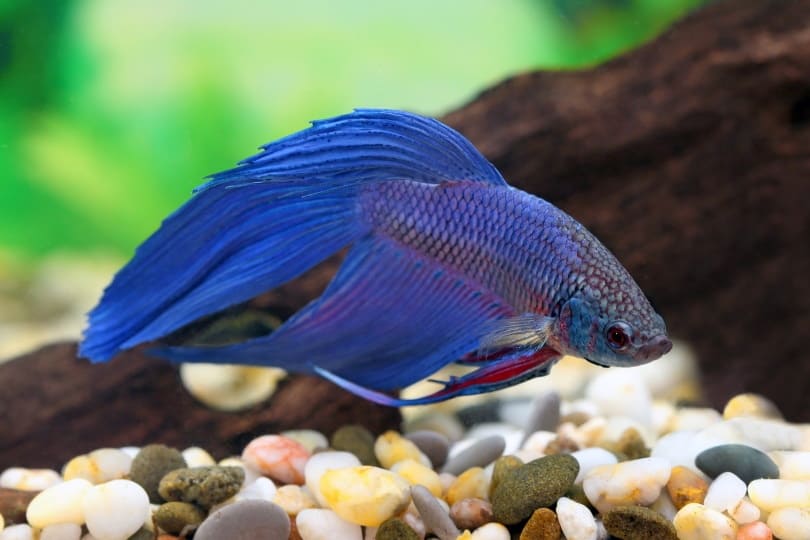
Among the many questions a beginner may have is how much food to give betta fish. There are many options, including pellets, flakes, live food, bloodworms, and flake meal. Here are some tips to help you determine how much to feed your betta fish every day. Floating pellets and flakes are the most common foods for betta, but live foods are also available.
Contents
Floating pellets
The amount of floating pellets to feed a betta fish varies depending on their diet and activity level. A safe amount is a couple of pellets a day, ideally twice a day. It’s best to follow a feeding schedule to avoid forgetting to feed your fish. If you have specific questions about what kind of food to feed your betta, don’t hesitate to ask the manufacturer.
The most important thing to remember when feeding your betta is to give him smaller portions of food, rather than a larger portion. This will ensure that your betta is getting the nutrients it needs without bloating or overeating. Bettas don’t understand the concept of satiation, and overfeeding can lead to bloating or worse, death. If you have to choose between the two, feed him less and wait longer.
Bloodworms
Before you feed your betta fish bloodworms, you should defrost them. Simply place a cube of frozen bloodworms into a shallow bowl of aquarium water and allow them to thaw out. Don’t dump the cube into the tank – you should cut it in half. Don’t overfeed, or your betta may suffer from intestinal problems, ammonia spikes, bladder disease, or constipation.
However, it is important to note that while breeding your own bloodworms is not a bad idea for your betta fish, it does require extra work. Make sure you purchase frozen bloodworms or freeze-dried ones from a reliable vendor and follow all instructions. Otherwise, your betta fish may not eat bloodworms and may even reject them. So, always check the package before feeding your betta fish.
Flakes
Betta fish need a variety of foods in order to remain healthy and vibrant. Fish flakes are the most common type of food for bettas. Omega One flakes are a popular brand and contain essential Omega 3 and 6 nutrients, as well as beta-carotene from salmon. Beta-carotene is a natural color enhancer and these flakes are inexpensive. However, when choosing the right food for your betta, you must first determine the size and shape of the flakes.
Generally, bettas need a diet that is rich in crude protein, which is not provided by tropical or normal fish flakes. Moreover, freeze-dried foods do not have the same nutritional profile as live animals and are not suitable for daily feeding. Flake food can be a great treat for bettas, but it’s not the right choice for daily feedings.
Live foods
Buying live foods for your betta is a great way to feed your pet a varied diet. Many species of bettas naturally eat mosquito larvae, which are rich in protein and fiber and are great for your fish’s digestive system. These foods should be introduced to your fish as soon as possible. However, it’s important to note that you can’t always be certain that live foods are parasite-free.
You can get live aquatic insects in the form of mealworms or brine shrimp. These are easy to breed, and they produce more baby worms when stored in the refrigerator. However, live food can also contain parasites and bacteria, and you should avoid buying it from unscrupulous vendors. Generally, live food is available in cube form, ranging from one to eight grams per cube. However, this amount varies with the product.
Freeze-dried foods
Freeze-dried foods are a great alternative to live culture foods. They are easy to prepare, and take up less space than live cultures. However, they are not suitable for all bettas, especially those with fussy taste buds. It is a good idea to thaw freeze-dried foods before serving them to your fish. However, you should not feed live food to your betta more often than necessary, as it may contain harmful parasites or bacteria.
Frozen live food comes in cube form, and cube size varies depending on manufacturer. One cube of frozen food is adequate for a single betta. Feed the cubes in small amounts. If possible, cut each cube into quarters or more before feeding them to your betta. Frozen food cubes should be soaked in water for at least two to three minutes.




